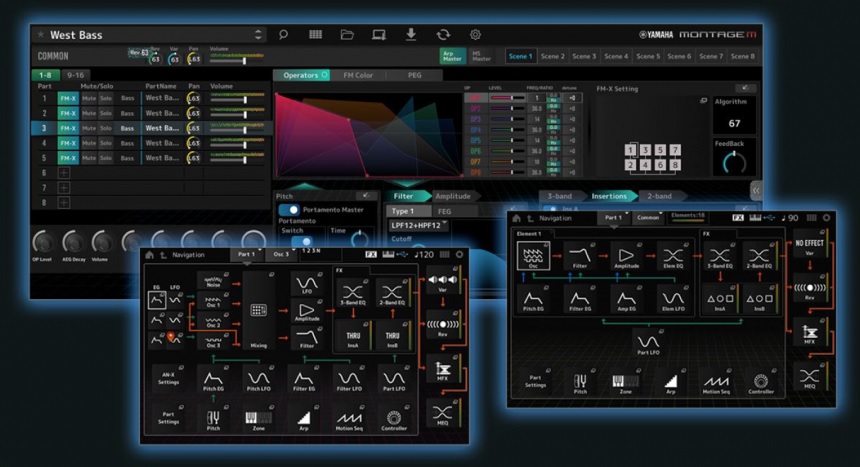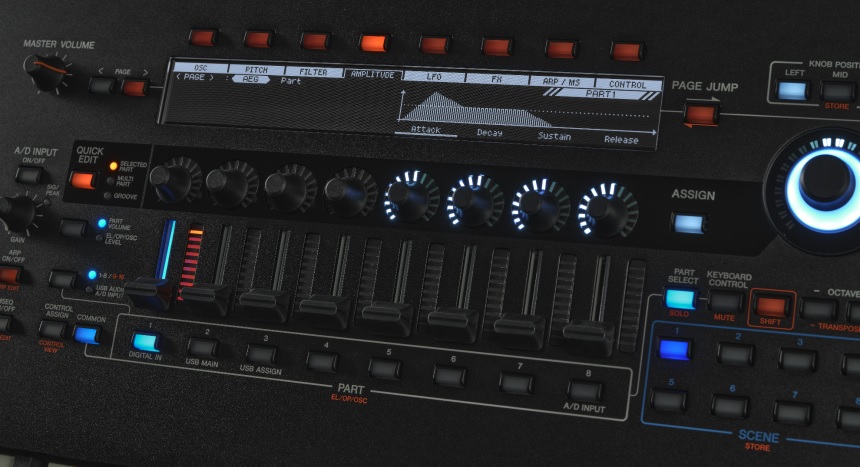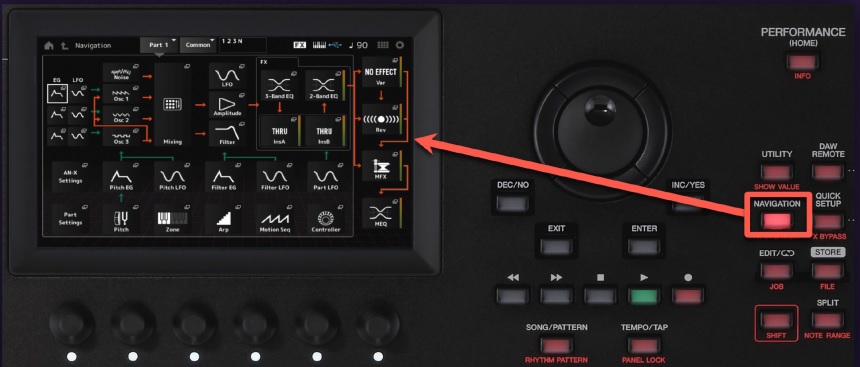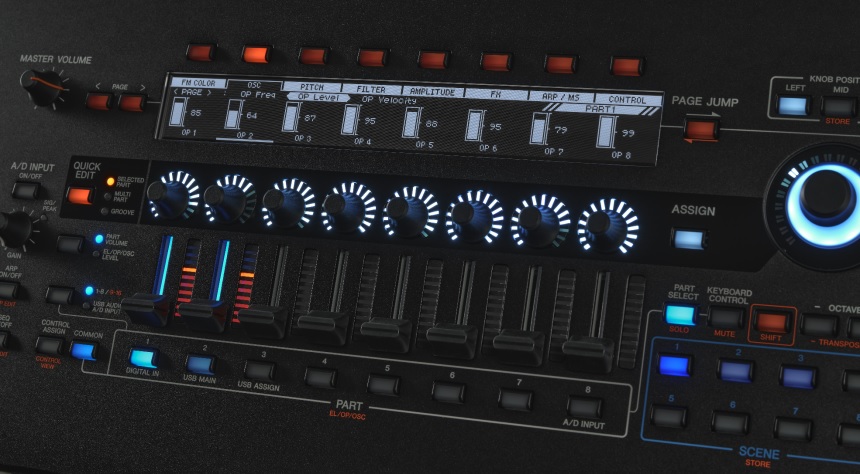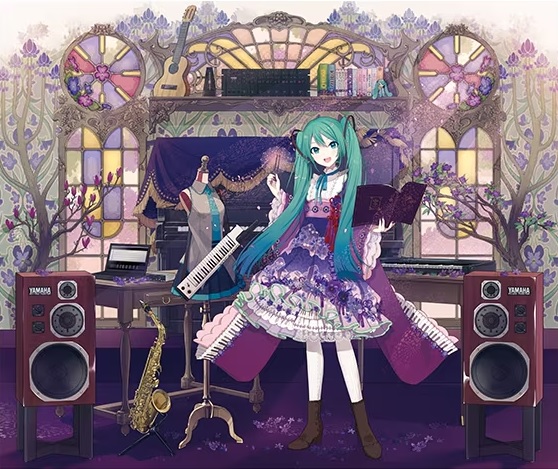As predicted, the Yamaha portable digital piano line has a new flagship — the Yamaha P-525 — replacing the popular P-515.
Lucky for all of us, the price has not gone up. USA MAP is $1,600 USD ($2,000 MSRP). It is already appearing on retailer sites for pre-order.
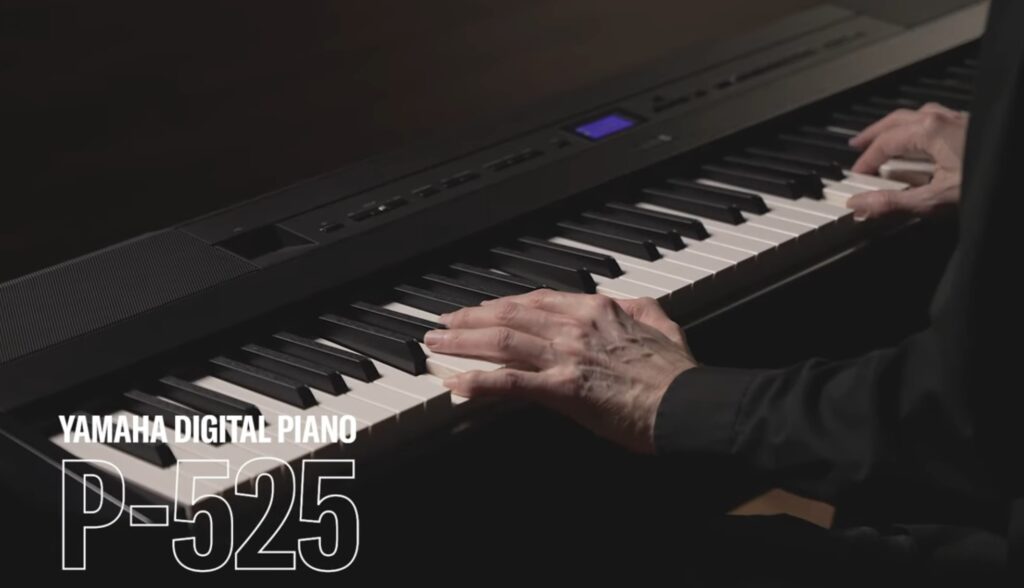
The P-525 web page is up. Here are the improvements over the P-515 and a few extra highlights (for the impatient):
- GrandTouch-S wooden (white) keys
- Grand Expression Modeling
- Registration memories
- Bluetooth audio
- USB to HOST (MIDI and audio)
- Amplification: 2 x (20W + 6W)
- Speakers: 2 x (Oval (12cm x 6 cm) + 2.5 cm (dome))
- Sound Boost and adjustable EQ
A number of features carry over from the P-515: CFX and Bösendorfer Imperial featured pianos, binaural sampling (CFX only), VRM, and half damper pedal. The P-525 amplifiers got a small bump.
The big change is the GrandTouch-S keybed, replacing the NWX keybed. I really liked playing the P-515’s NWX. Here’s hoping that the P-525 has the same non-fatiguing action and key-to-sound connection. [I’m dying to try it.]
Giggers will truly welcome the registration memories and adjustable EQ. Now you’ll be able to store panel settings in the piano itself without resorting to the Yamaha Smart Pianist app. Nothing against Smart Pianist, but a tablet (or phone) is yet another thing to carry and set-up at the job.
The P-525 brought over the XG sound set and drum kits (480 voices and 18 drum/SFX kits). These are mainly used for MIDI file playback, but feel free to dip in. The P-525 adds four new effect types for specific voices (and cannot be selected by the Voice menu):
- VCM EQ 501
- CompDistortion
- VintagePhaserStereo
- StereoOverdrive
The new effect types bring the P-525 closer to CP88 territory although the P-525 still lacks several important stage piano features (zones, front panel gizmos to control effects in real time, etc., etc.)
The P-525 adds a few voices that make use of the new, voice-specific effect types:
- Dance Grand (AP)
- Old School Pf (AP)
- Auto Pan EP (EP)
- Dyno E.Piano (EP)
I noted inconsistencies in the MSB/LSB/PC numbers between the P-515 and P-525 (Data List PDF). I don’t know if these differences are significant. Perhaps Yamaha need to proofread the MIDI voice assignments? One PDF claims “1-128” numbering and the other PDF claims “0-127” numbering WRT program change numbers.
Also predicted, Yamaha have a new, portable triple pedal unit, the FC35. The FC35 plugs into the P-525 triple pedal port. The FC35 is compatible with other Yamaha digital pianos which implement the triple pedal port (e.g., DGX-670 and P-225). The FC35 retails for $100.
I’m going to call it a night and will take a close look at the Owner’s Manual tomorrow. Start browsing for deals on the P-515, if the 525 doesn’t float your boat!
Update (after a good night’s sleep)
I didn’t catch it last night, but the P-525 has an updated speaker box. Yamaha claim:
We also made significant improvements to the speaker boxes. Flared bass reflex ports and proprietary sound-absorbing tubes substantially reduce wind noise, vibration noise, and other excess noise, which helps to deliver a higher quality of sound.
The P-525 is also the first digital piano equipped with an FIR filter, which makes fine adjustments to the phase of the sound. This allows your audience to hear a naturally pleasing sound as you play.
I don’t think they’re lyin’ because I have not seen the FIR filter touted in other Yamaha digital piano blurbs.
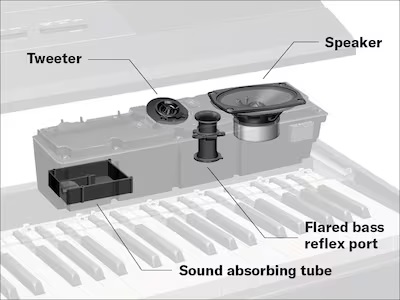
The FIR filter is a digital crossover between the mid-range woofer and the tweeter. I haven’t reviewed it yet, but I’ve been playing through a Yamaha Stagepas 100BTR, which features a digital FIR crossover filter. It’s good stuff.
The P-525 adopts the registration memory scheme which should be familiar to Yamaha arranger people. The software engineers overloaded the “Piano Room” button with a REGIST operation, i.e., press and hold the button for registration operations. Use the arrow buttons to navigate to a bank, then press a (voice) button to select a registration within a bank. The bad news here is holding the REGIST button while hitting a second button to execute the selection. This would be an awkward gesture if you’re trying to change registration while playing.
The P-525 has a 3-band Master EQ (low, mid and high). You can select from three EQ presets or create your own USER setting. The Master EQ setting is saved in a registration along with a bunch of other important panel settings. Check the manual.
There is only one thing to bust Yamaha’s chops. The feature overview video demo claims “542 attractive voices.” The number is incorrect: 44 panel voices plus 480 XG voices is 524. Further, the 480 XG voices are really intended for MIDI file playback. There are some usable XG voices, but the entire lot of them smells like the 1990s. I laud the new AP/EP voices (and DSP effects), but C’mon man!
I have played the P-515 several times since my initial review. Each time, the P-515 left me favorably impressed. If the GrandTouch-S action is non-fatiguing and playable, the P-525 should be everybody’s serious candidate. You will get most of the benefits of a full-blown CLP in a quasi-portable package — $2,000 USD (street) for a slab, stand, bench and pedal unit. That’s excellent value.
Copyright © 2023 Paul J. Drongowski


